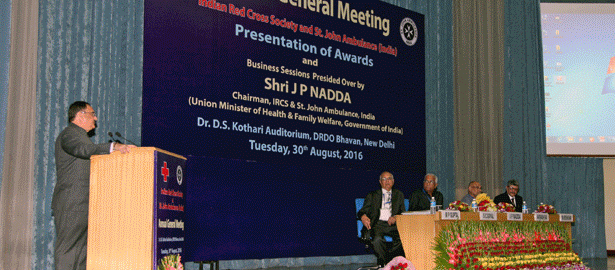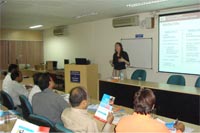 |
According to World Health Organization around 1.1 billion people globally do not have access to improved water supply sources whereas 2.4 billion people do not have access to any type of improved sanitation facility. About 2 million people die every year due to diarrhoeal diseases and most of them are children less than 5 years of age. These figures can flabbergast anyone and everyone. The situation worsens if there is a disaster. Perennial flooding is a common phenomenon not only for India but also in neighbouring countries such as Bangladesh and Nepal. Resultantly unprecedented number of people suffer from water borne diseases due to lack of clean drinking water. |
Indian Red Cross Society caters to the need of the natural disaster affected population by deploying Water Sanitation Units and providing safe drinking water as and when required. The Society has prepositioned fourteen WATSAN units at six regional warehouses. They are of wide variety like LMS units (5), SETA Units (5), Berkefield TWA 6 (2), Vivendi Buron (1) and Nomad (1). These WATSAN units have also been utilized in the relief operations like SETA units (5) were deployed at Port Blair post Tsunami in 2005 and around 99,50,000 people were benefited. In 2006, two LMS trailer mounted units were installed at Surat in Gujarat and the beneficiaries were around 6,00,000. These units have the capacity of providing 3000-10,000 litres of safe drinking water per hour. |
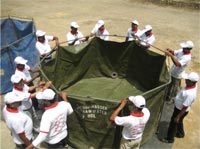 |
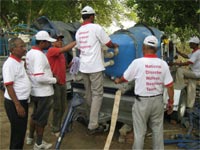 |
A need was, therefore, felt to develop a specialized and sectoral IRCS National Disaster Watsan Response Team (NDWRT) within the existing National Disaster Response Team (NDRT) for timely and effective WATSAN interventions to minimize the suffering and to reduce water borne risks during disasters. To address this a seven-day training was conducted from May 18th –24th, 2009 by IRCS, NHQ at Disaster Management Centre with practical trainings at CTI, Bahadurgarh warehouse. The training was in line with the IRCS Strategic Development Plan and DM Strategy 2009-2012. Further it compliments local government response efforts and will increase the IRCS visibility with increased WATSAN capacity to play a significant role in humanitarian and risk reduction effort. |
The basic purpose of organizing NDWRT training was to strengthen the IRCS National Disaster Preparedness and Response Mechanism (NDPRM), a core component of the IRCS Disaster Management Programme. This would contribute in rolling-out the national level WATSAN training, in a phased manner, for effective, coordinated, efficient and timely deployment of the National and State level DWRT trained members during disasters in providing WATSAN assistance within country and also in the region, should there be a requirement. Around 22 participants from IRCS branches and warehouses participated in the training |
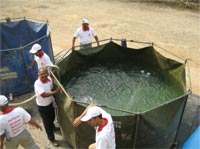 |
programme. They belong to various sectors such as SDRT members, disaster management supervisors, first-aid trainers, guard, plumber and electricians. Mrs. Kathyryne Clarkson, Water & Sanitation Delegate, Disaster Management Unit, Asia Pacific Zone, International Federation, Mr. Javier Perez, WATSAN Delegate, Spanish Red Cross and Mr. Thejus Hansara, WATSAN expert Red R (ex Red Crosser) facilitated the training programme.
Dr. S.P. AgarwaL, Secretary General, IRCS during the closing ceremony congratulated all the participants and stated that ‘ with this training IRCS has been successful in forming the National Disaster Watsan Response Team (NDWRT). It’s a unique model, as IRCS becomes the first National Society to form such a team in the Asia Pacific region and it should be replicated at the State and District level’. He further added that the need is now to develop a database of the trained NDWRT members as per the NDRT database format and link with IRCS, Disaster Management Centre (DMC), NHQ and the Emergency Operations Centres (EoC) at the State Branches in 11 DM programme State Branches. Standardization and upgradation of WATSAN units should always be the matter of consideration.
Mr. Sunil Bankar, DM Coordinator of IRCS Maharashtra State branch stated that he had no idea of installing a WATSAN unit. The seven-day training was completely an eye opener as it helped him to get familiar with the technicalities involved in the installation and management of Water Sanitation Units. He feels enthusiastic to be a part of NDWRT and would be contented if his services could be utilized some day.

